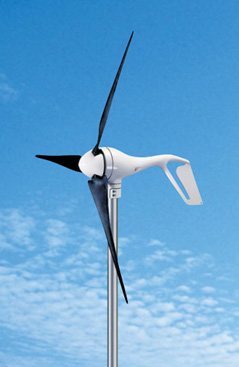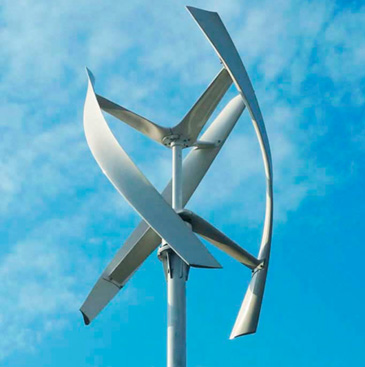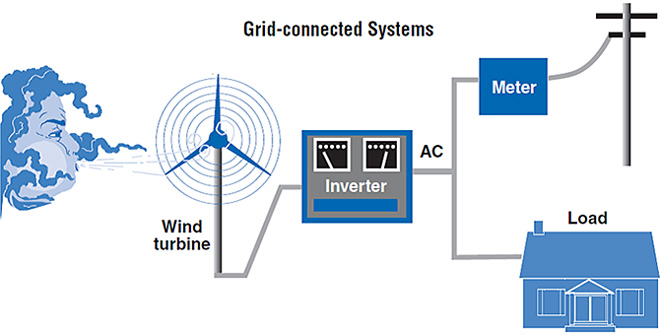Small Wind Turbine
Homepage- Definition
-
Definition of small wind turbines
Each country has slightly different definition for small wind turbines.
- According to international standard IEC 61400-2, small wind turbines are defined as having a rotor swept area less than 200m2 and generating a voltage less than 1,000 Va.c.or 1,500 Vd.c.。
- According to AWEA, the rated capacity of a small wind turbine is less than or equal to 100kW; if the rated capacity of a small wind turbine is ≦1 kW, it is defined as a micro wind turbine.
- According to BWEA, the rated capacity of a small wind turbine is between 100 W~ 50 kW; if the rated capacity of a small wind turbine is <100 W, it is defined as a micro wind turbine.
Small wind turbines are primarily divided into two types, horizontal axis and vertical axis. A wind turbine rotates rotor blades in response to the wind and drives the generator to produce power. Through technologies of power conversion, optimal control, grid-connected control or the optimal control for energy storage, a small wind turbine captures the maximum power output and takes stability and safety of grid simultaneously. The Small Horizontal Axis Wind Turbine and Small Vertical Axis Wind Turbine are shown in Figure 1 and Figure 2 respectively. Furthermore, competitiveness analysis of various products and business planning also are implemented in order to create an opportunity to develop small wind turbines to drive the industry.

Data Source: Southwest Windpower
Figure 1 Small Horizontal Axis Wind Turbine Diagram
Data Source: Urban Green Energy
Figure 2 Small Vertical Axis Wind Turbine Diagram
- Technology Introduction
-
Principles of power generation of a small wind turbine
The power of a wind turbine is produced through wind energy by blowing blades to drive rotor axis and then produce mechanical energy. The rotor axis then drives the power generator to produce electrical energy. The final step is to convert power in order to connect to utility or store power with the optimal control for effective use of energy, as shown in Figure 3. However, wind energy of a wind turbine is converted to mechanical energy and then converted to electrical energy. Energy loss occurs during the conversion process. The main conversion formula is shown as follows:
PWEA=Pwind×Cp,Betz×ηRotor×ηGear×ηGenerator×ηElectrical
Conversion efficiency formula of a wind turbine

Data Source: NREL
Figure 3 Small Wind Turbine Grid-connected System DiagramThe wind power conversion efficiency of a small wind turbine includes wind energy (PWINDM), mechanical energy (ηRotor ×ηGear ) and electrical energy (ηGenerator×ηElectrical) where the output power of a wind turbine is wind energy × mechanical energy × electrical energy. The actual produced output power efficiency (PWEA) of a wind turbine is the conversion of final wind energy multiplied by wind power efficiency index (Cp,Betz). According to German aerodynamics expert Albert Betz, the best wind energy conversion efficiency of a wind turbine is 59.3 %. The equation "PWIND = 1/2ρAV3" can be achieved based on principles of dynamics, where ρ = Air Density(1.225 kg/m3 in general), A = Swept Area (m2) and V = Rated Wind Speed (m/s2).


